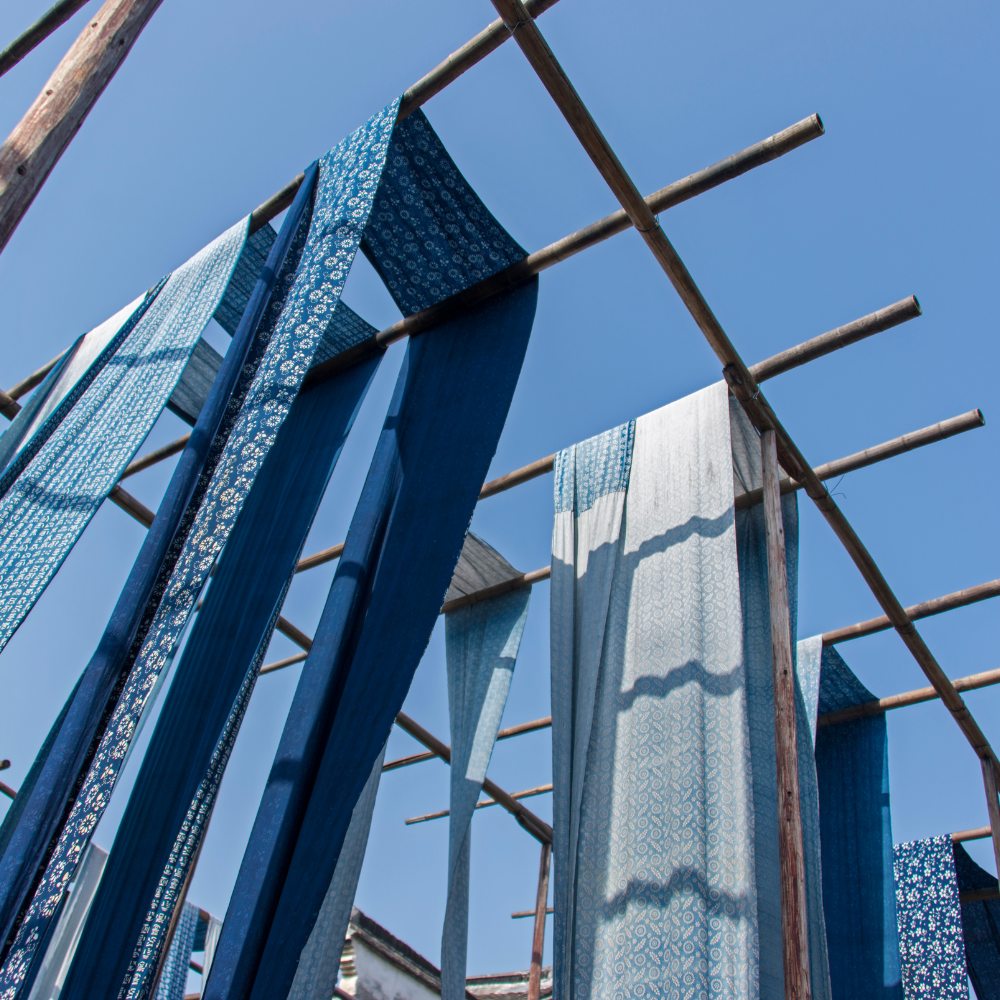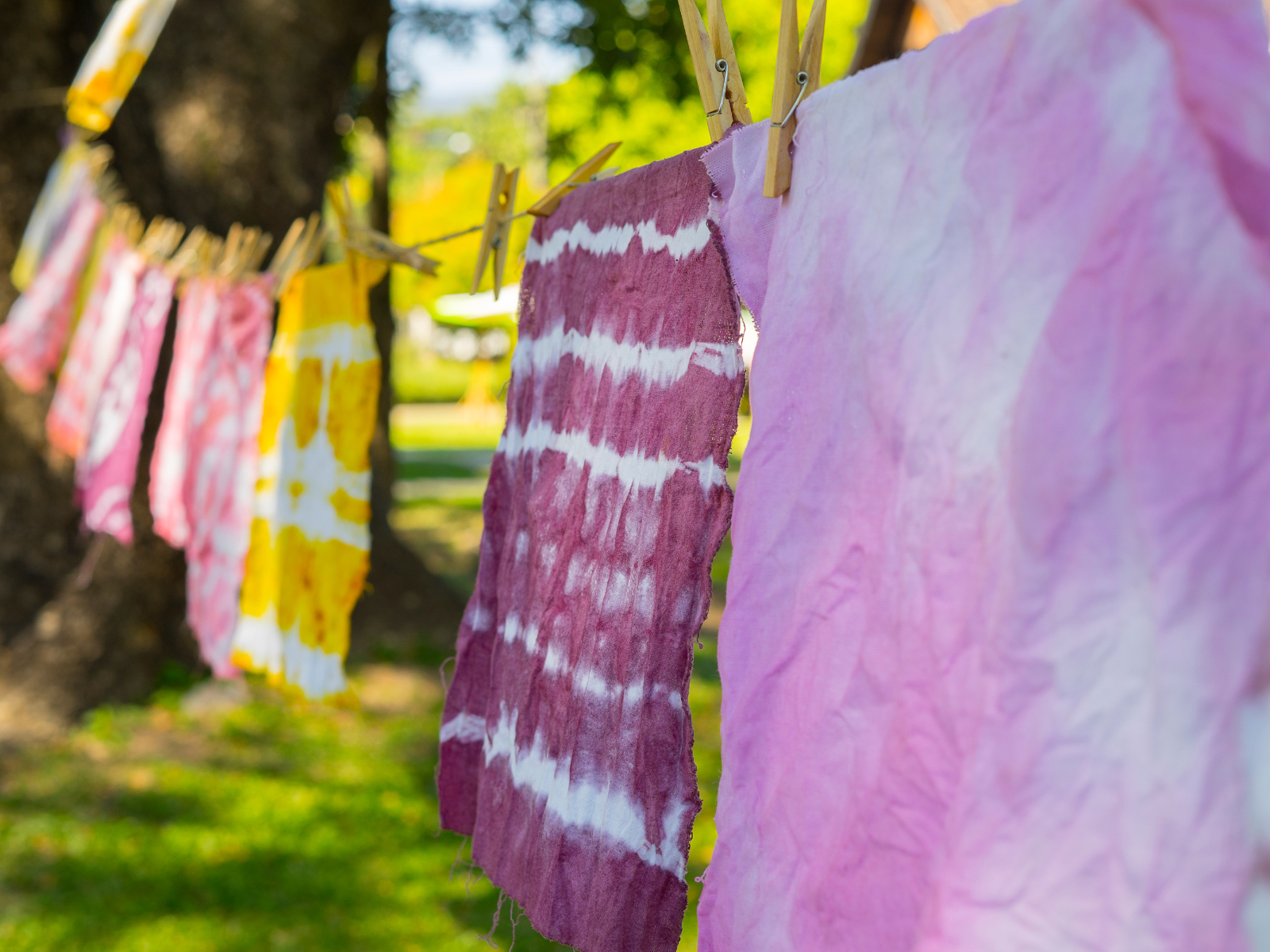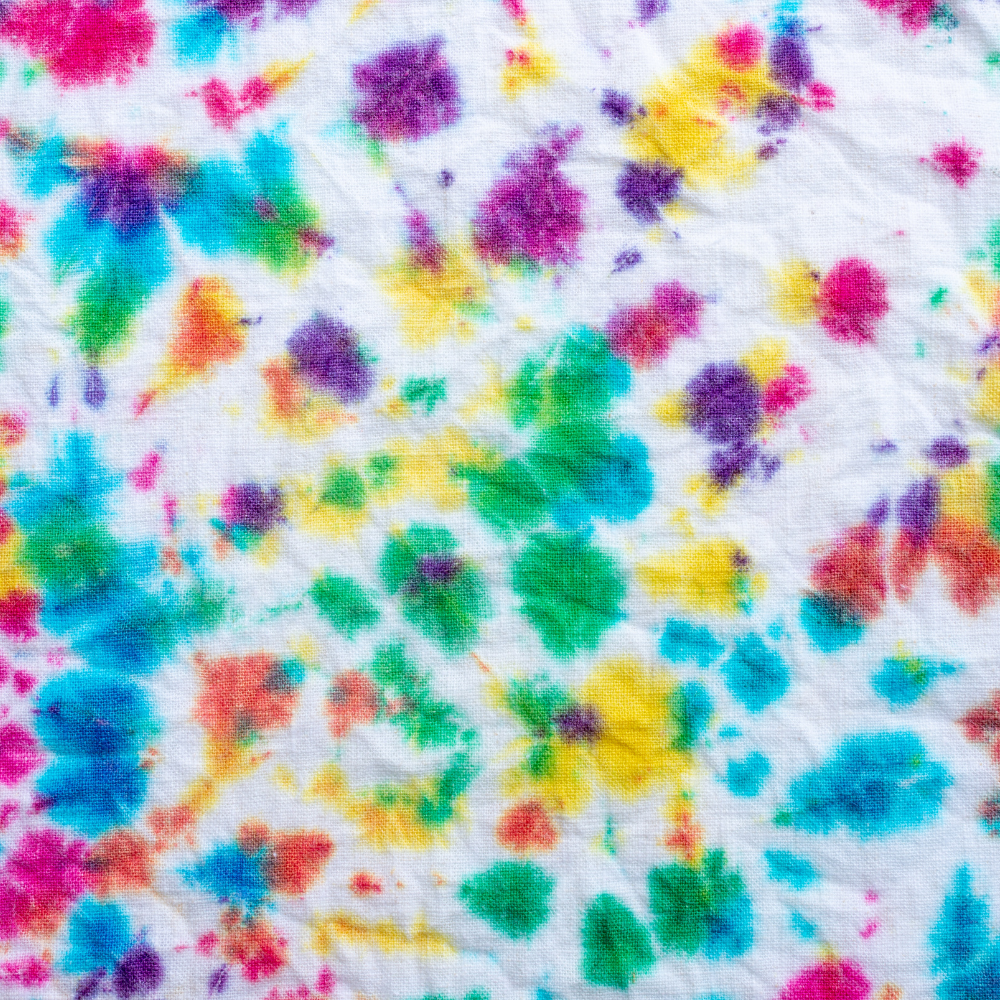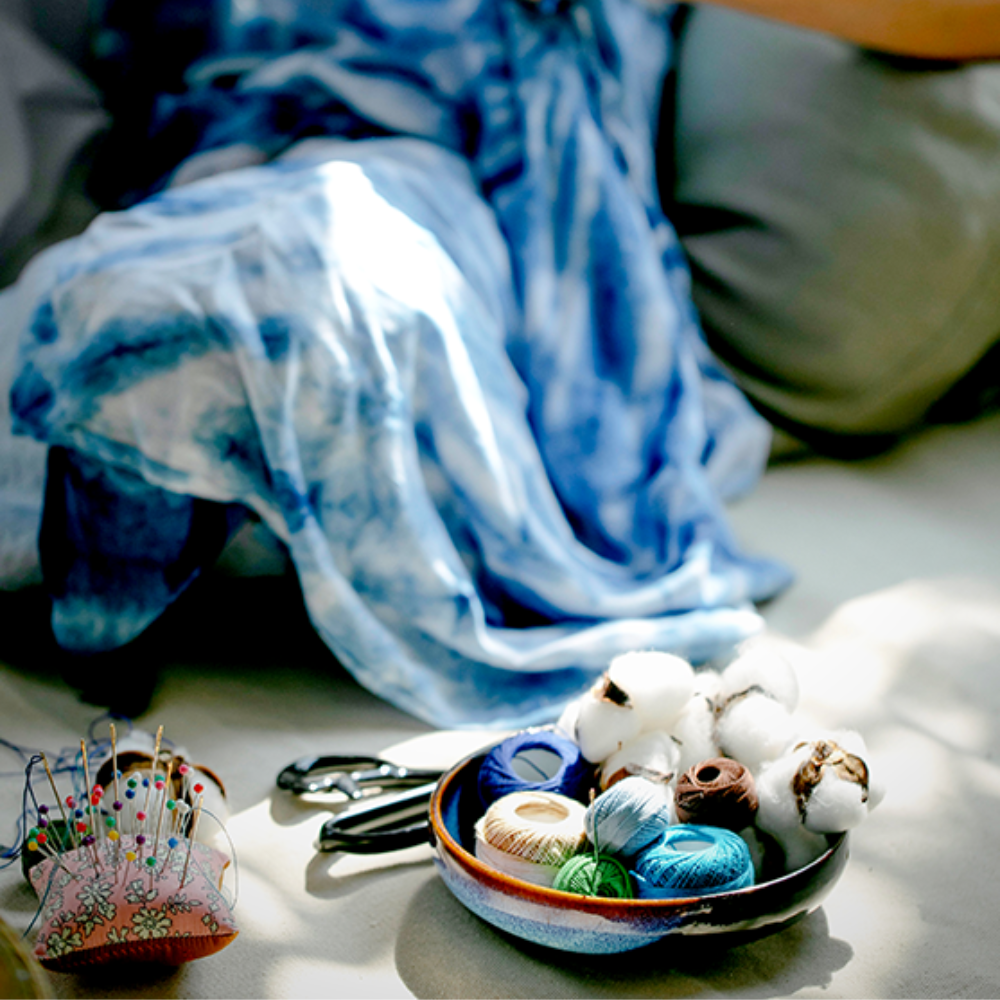Ready to add a dash of color and vibrancy to your creations and inspired to create something beautiful and unique with cotton fabric?
Have you ever fallen in love with a colorful pattern on a piece of clothing or fabric and wished you could create something just as vibrant and unique?
The good news is that fabric dyeing has been around for centuries, and it is a fun and creative way to add your personal touch to any plain cotton fabric.
The wonderful world of fabric dyes can be an incredibly satisfying experience that opens up endless possibilities for decorative works of art.
From tie-dyeing t-shirts to creating intricate quilt designs, learn everything about incorporating colorful tones into cotton fabrics as we guide you through this fun technique!
Explore the dye-namic world of fabric dyes for cotton with us to take your arts and crafts projects up a notch!
Whether you’re an artist, tailor, or maker, unleash your creativity in experimenting with colored fabrics like never before.
Whether you're just getting started in making cool cotton creations or if you've been working with textiles for years, exploring your craft through different dye techniques can provide endless possibilities regardless of your level of expertise – all you need is a little bit of gumption, imagination, and knowledge about how these special dyes work!
If you've ever marveled at a vibrant cotton t-shirt or gawked at a beautifully patterned cotton dress, you're about to embark on an exciting journey.
We're diving into the technicolor world of fabric dyes for cotton.
Well, buckle up, because we're about to take a rollercoaster ride into the dye-lightful world of fabric dyes for cotton; it's going to be a wild, fun, and informative adventure!
Get ready to add a splash of color to your artistic endeavors!
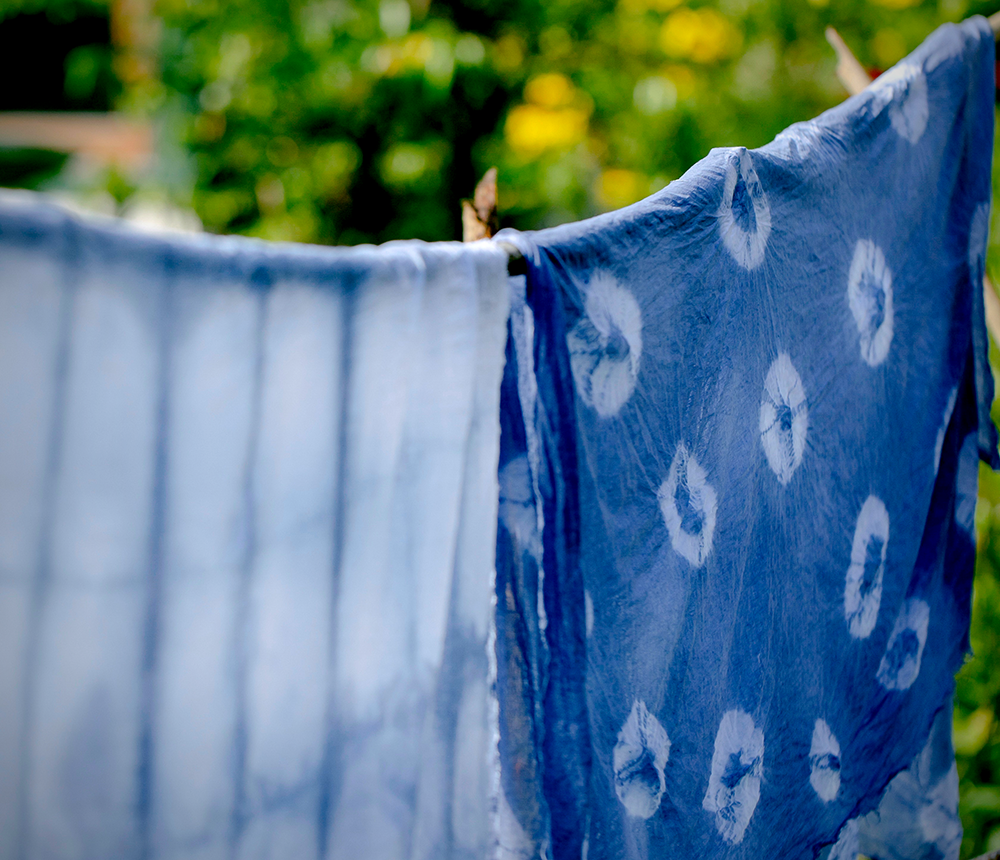

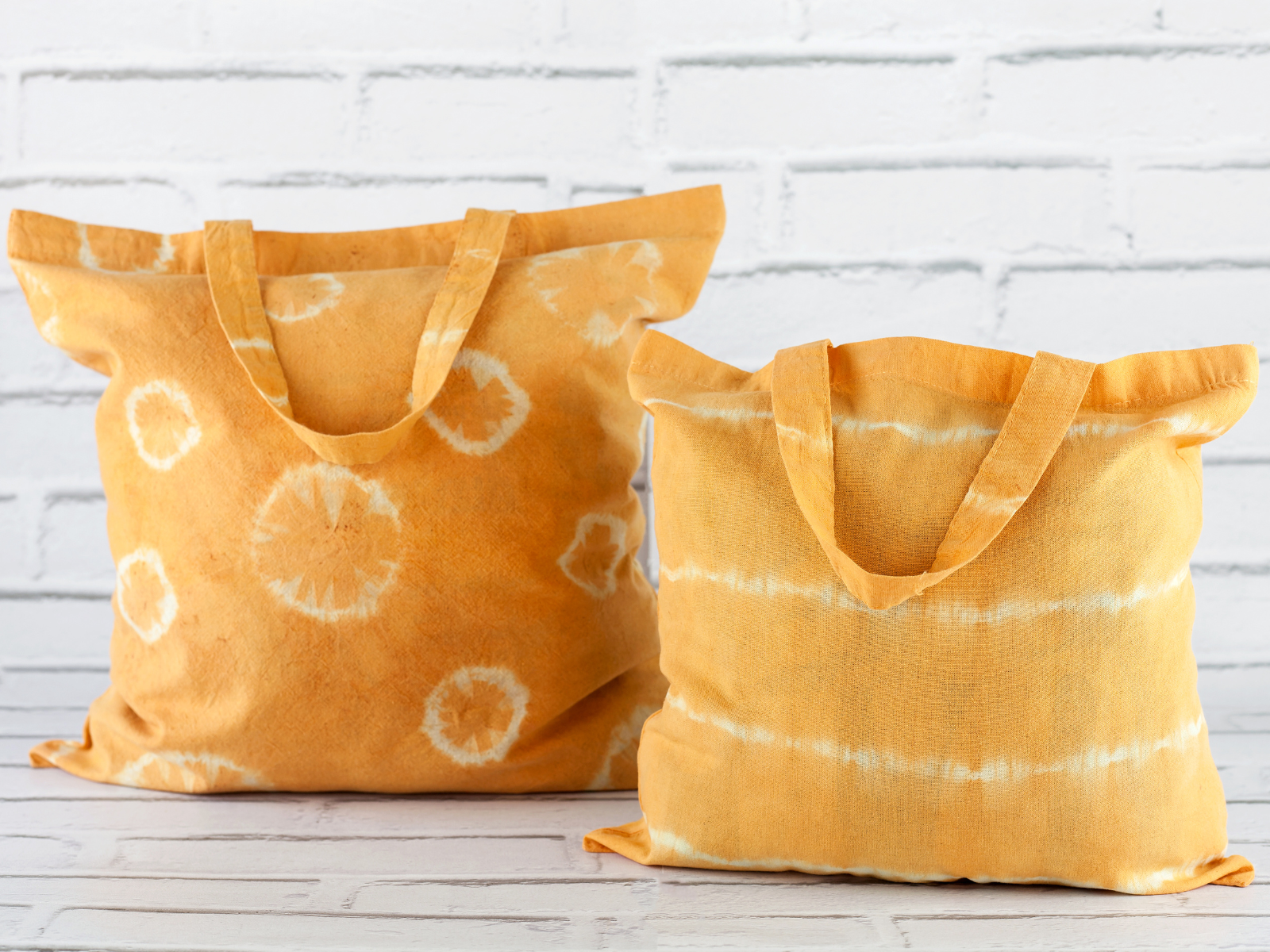
Types of Dyes
When it comes to dyeing cotton, there's a whole palette of options.
Dyes can come come in the form of a powder dye, liquid dye, or a block dye.
Each of these have their own advantages and disadvantages when it comes to working with cotton fabrics.
Powder dyes are more concentrated than the other two types and are available in a wide variety of colors.
They work well on natural fibers, such as cotton, silk, linen, wool, and rayon.
Synthetic fibers and fabric blends can also be dyed using powder dyes, however they may need to be treated first with a mordant or resist.
The downside is that they can be tricky to work with, as you need to ensure that the powder is completely dissolved before it can be used.
Liquid dyes are a great choice for cotton fabrics due to its versatility and affordability.
These are great for use on cotton fabric and other natural fibers because they’re easy to mix and apply, requiring minimal effort; just mix the dye in with warm water and soak your fabric for a few hours!
Liquid dyes are also great for fabric painting, as they can be used to create vibrant and intricate designs.
Block dyes are a type of dye that come in solid blocks.
These are great for creating bold and unique colors on cotton fabrics, and they are also quicker to apply than powder or liquid dyes.
Plus, the blocks make it easy to store the extra dye for future use.
When it comes to fabric dyeing, there are two primary types: natural and synthetic dyes.
Natural dyes can be extracted from plants, flowers, or other organic materials, making them eco-friendly and full of charm.
However, they may not produce consistent results, and they require a bit of experimentation to achieve the desired shade.
On the other hand, a synthetic fabric dye is formulated in a laboratory and provides cleaner and brighter hues.
They are easier to use but can have environmental issues.
Direct dyes are commonly used for coloring cellulose-type textiles like cotton and form colored anions.
In the textile industry, you'll also find reactive dyes, acid dyes, disperse dyes, organic dyes, and azoic dyes.
Each type has its own set of properties, so it's important to choose the right dye for your project because dyeing cotton is different from working with polyester and nylon fabrics.
A common type of synthetic dye is fiber reactive dye, which are suitable for cotton fabric since they bond with the fibers and remain durable.
While other synthetic dyes work well on cotton fabrics, fiber reactive dyes are by far the most popular and easy to use.
The variety of hues available is also second to none, and the results are often brighter and more vibrant.
Acid dyes are also popular for many fabric projects, and they provide an amazing range of hues that will take your breath away.
Disperse dyes are the easiest and most affordable type to use.
These dyes are perfect for projects that don't require long-lasting, lightfast results but rather just a bit of color.
Organic dyes are considered eco-friendly because they are made with natural ingredients.
However, organic dyes can be tricky to use since the colors tend to fade quickly and are not as vibrant as synthetic dyes.
Nitro dyes are another type of synthetic dyes frequently used to color a wide range of fabrics, including cotton.
Sulfur dyes, which give mostly dull colors, are typically used on cotton fabrics and other natural and man-made cellulosic fibers.
An acid dye is another type of dye often used on cotton fabrics, which produces bright colors.
An all-purpose dye can come in a wide range of hues and can be used on different fabrics; these dyes are known for their vibrant and long-lasting results.
Lastly, azoic dyes are among the most permanent of all fabric dyes and can be used to color a wide range of materials.
Are you a fan of bold, vibrant colors? Fiber-reactive dyes might be your best bet.
Prefer softer, more muted shades? Try direct dyes.
Feeling adventurous? Mix and match different dyes for a truly unique effect.
Be sure to check the label when shopping for fabric dye, to ensure it is suitable for the kind of cotton fabric you plan to dye and the method you plan to use.
The best fabric dyes for cotton will depend on your project and its end goal; if you're looking to create a permanent, lightfast fabric design that won't fade over time, then fiber reactive dyes are the best option.
However, if you just want to give your creations a bit of pizzazz with minimal effort, disperse dyes are your go-to choice.
No matter what type of dye you choose, it's important to take the time to understand how it works and practice on a few scraps of fabric in order to get the results you desire.
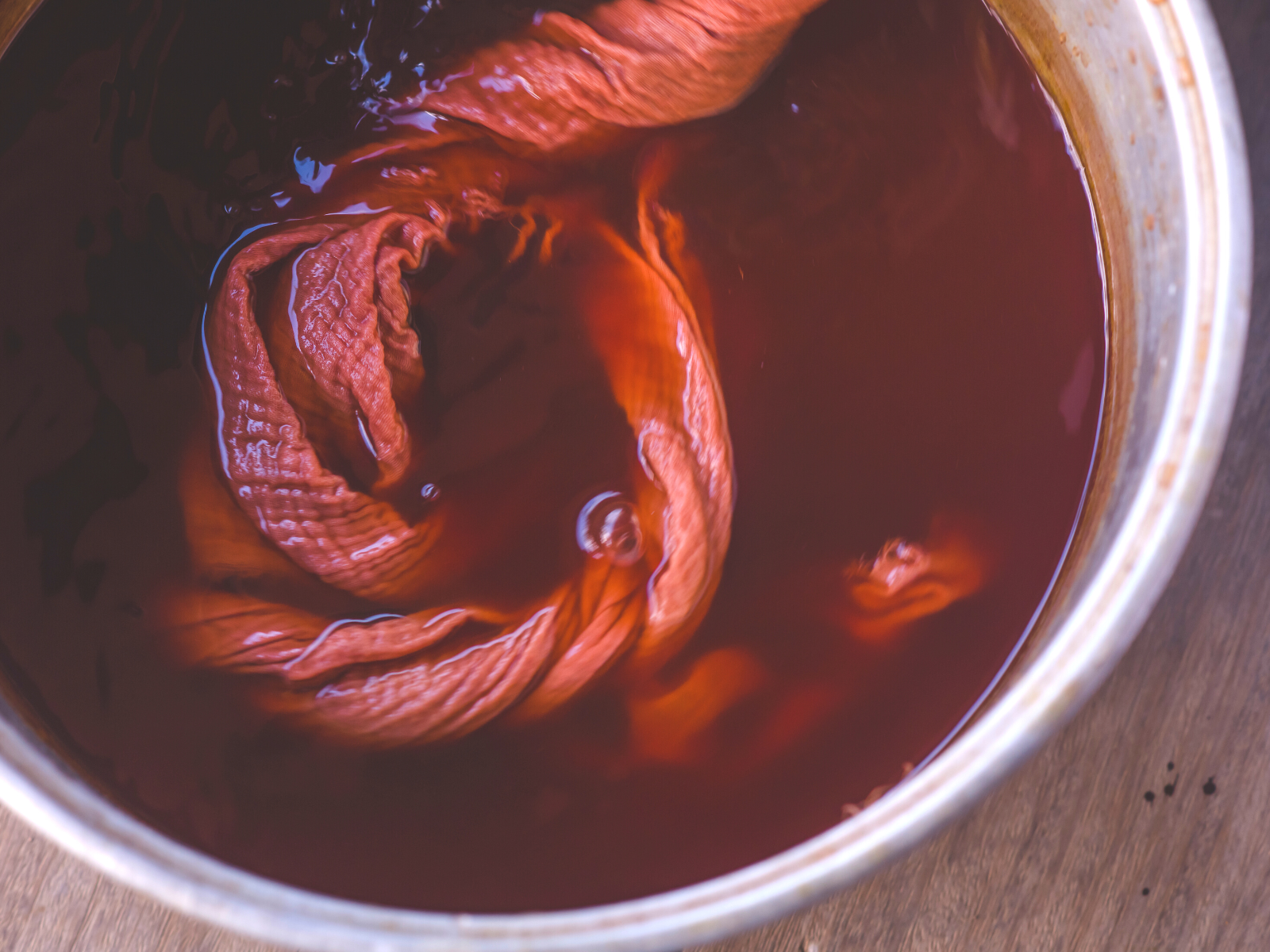
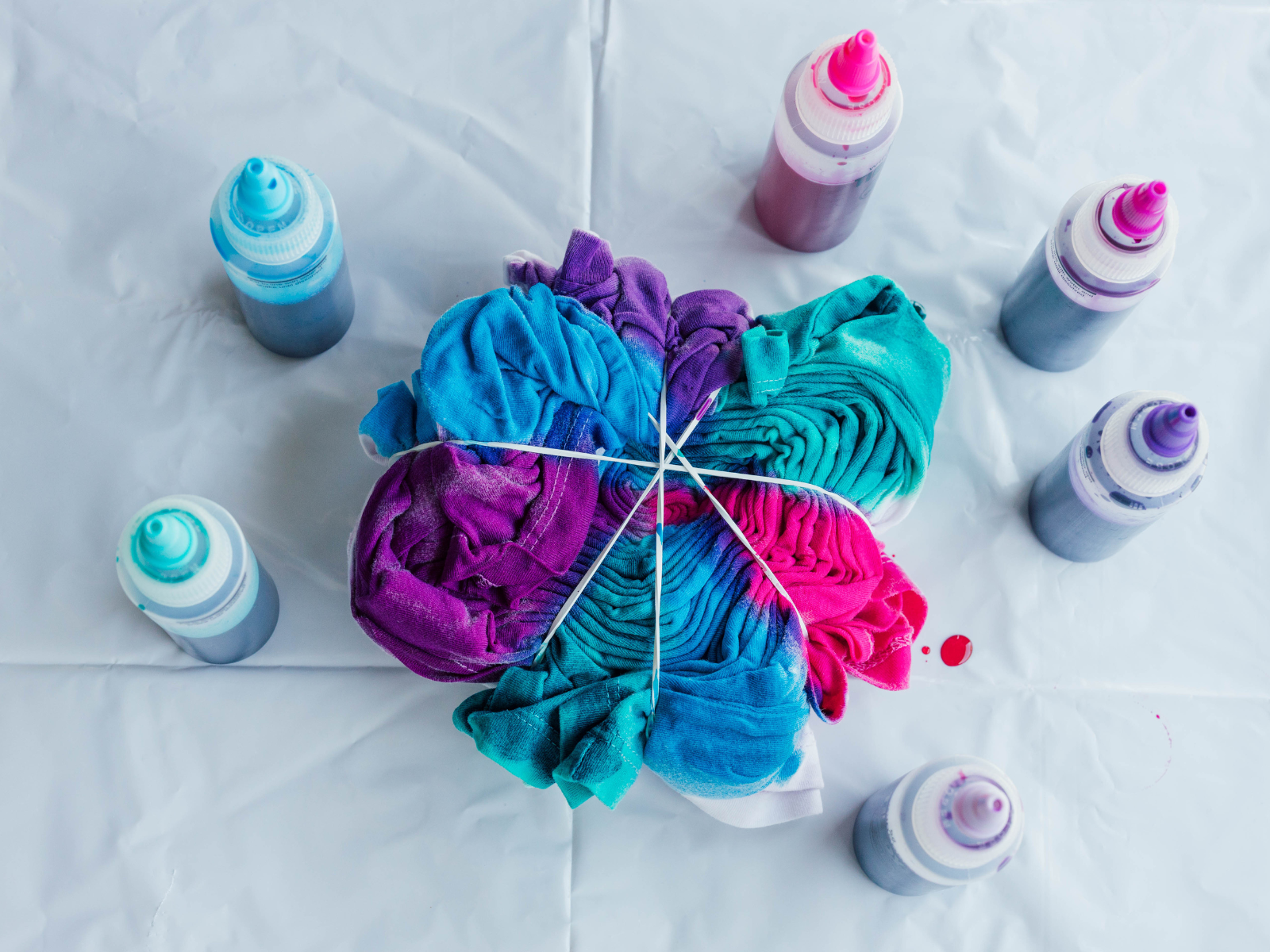
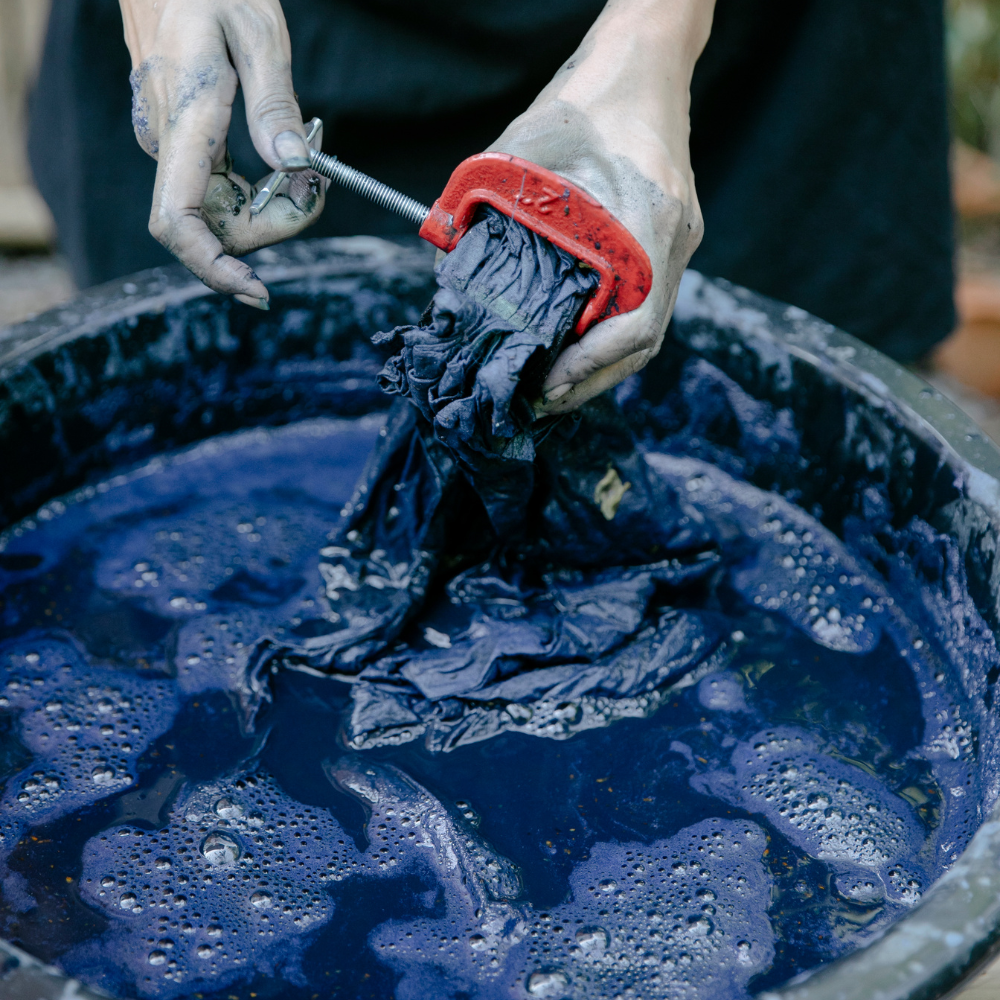
History and Techniques
Let's turn back the clock and dip our toes into the colorful history of fabric dyes.
Dyeing fabric has a rich history that dates back to ancient civilizations, where people used natural dyes to create colorful clothing and art.
Using natural and synthetic fibers, dyeing wool, silk, and cotton was a popular practice among many cultures.
From the early days when our ancestors used natural dyes from plants and insects, to the discovery of synthetic dyes in the 19th century, and now to the modern era of eco-friendly dyes, it's been quite a journey
Today, fabric dyeing is celebrated through an array of techniques and styles, from dip-dyeing to shibori, batik, and tie-dyeing.
Shibori is a resist dyeing technique that originated in Japan, where fabric is folded, twisted, or bound before dyeing, resulting in unique patterns and designs.
Batik originates from Indonesia, where wax is used as a resist before dyeing.
Tie-dyeing is the process of tying, folding, and twisting the fabric to create intricate spiral, striped, or crumpled designs.
No matter if you're using natural fabrics, synthetic fabrics, or blended fabrics, there's a perfect option to get the dye job done!
Fabric dyeing techniques also vary depending on the type of dye used.
For example, when using natural dyes, you'll need to extract the color from the plant or insect and then mix it with water and other ingredients.
When it comes to synthetic dyes, you'll follow a slightly different process; for instance, pre-treating the fabric with dye fixatives and mordants to help the color adhere better.
The actual dyeing process is also quite different depending on the type of dye used, such as immersion, dipping, or painting.
Modern dye options, like Rit liquid dye, Rit powder dye, Jacquard Idye fabric dye, and Dylon fabric dye, make it simpler and easier to add vibrant colors to cotton fabrics.
No matter what type of dye you use, it's important to read all instructions carefully and practice on a scrap piece of fabric before attempting your project.
With a little practice and patience, the possibilities are endless!
Who knew that the path to your favorite cotton tee could be so steeped in history?
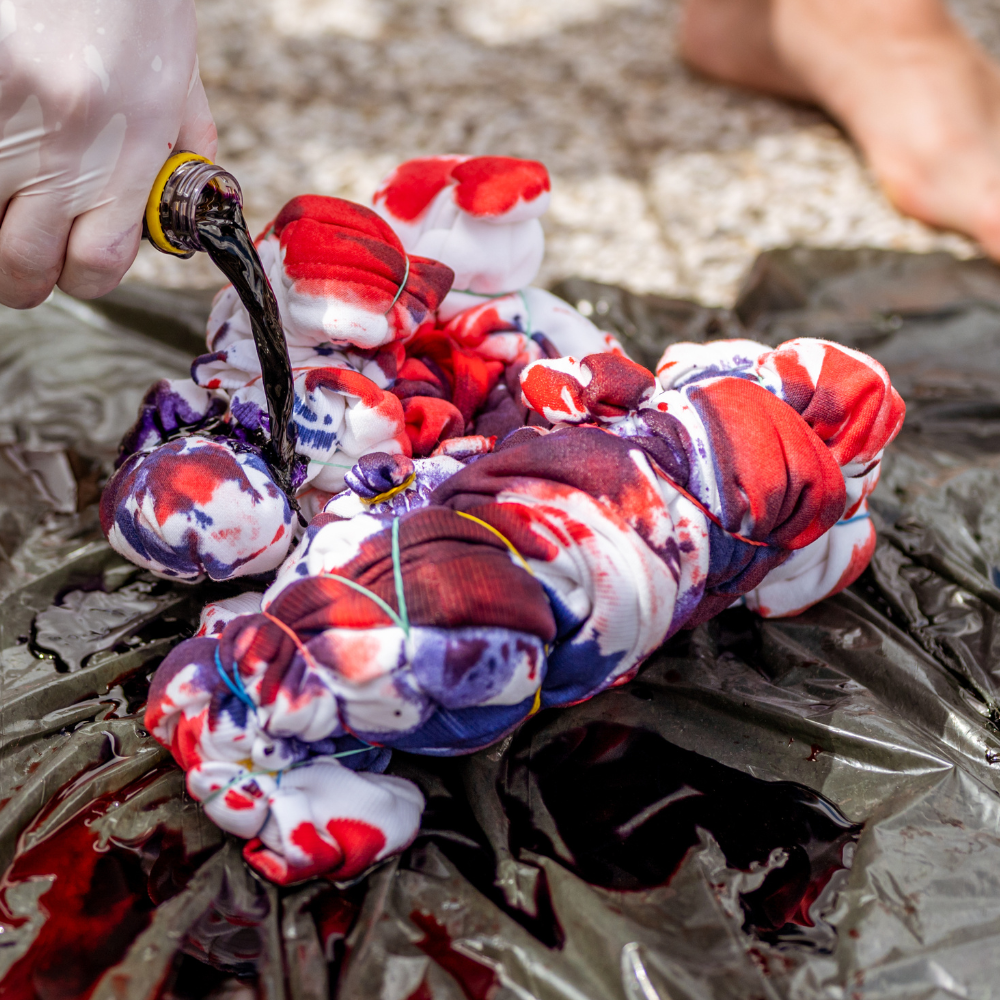
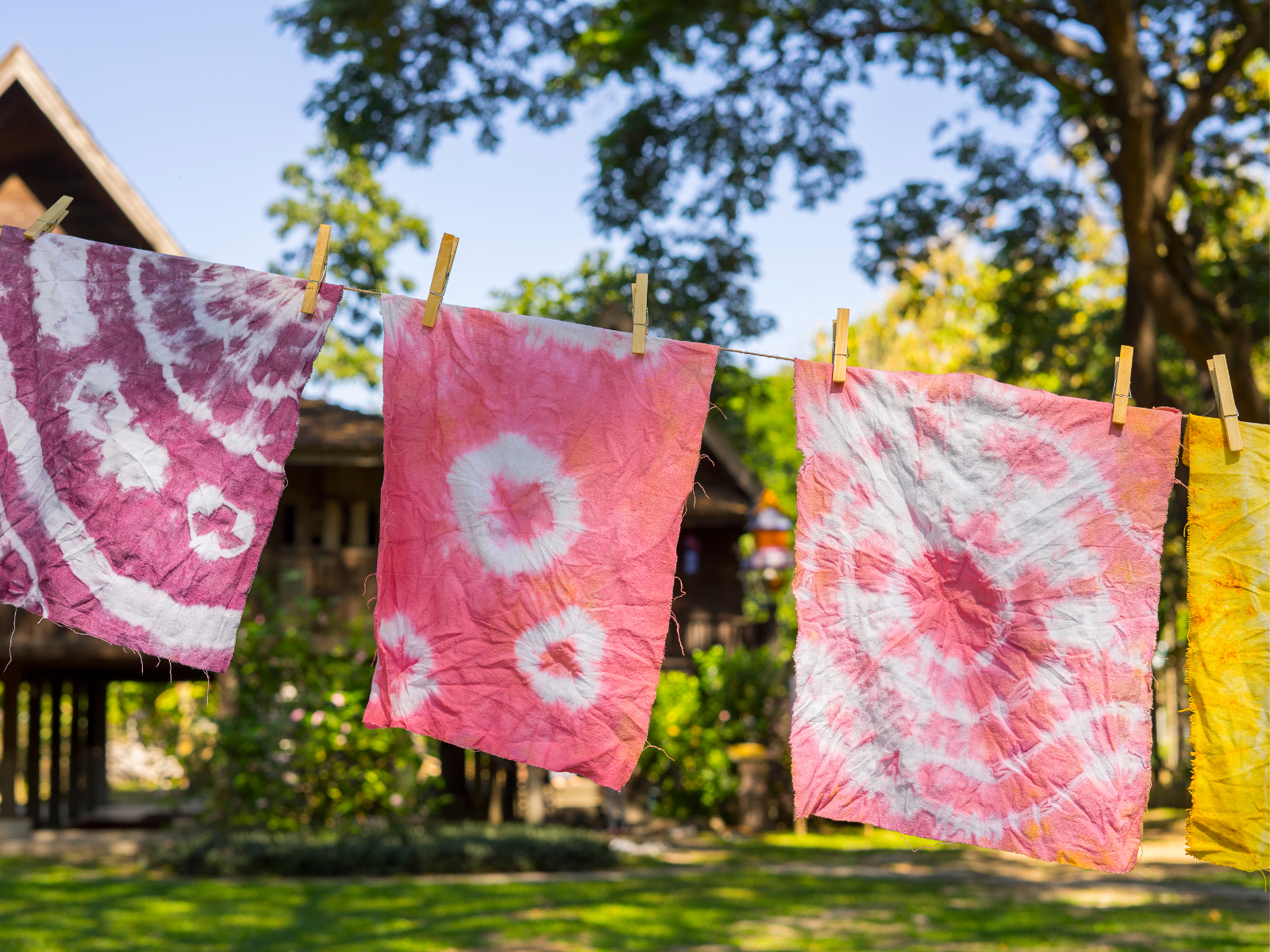
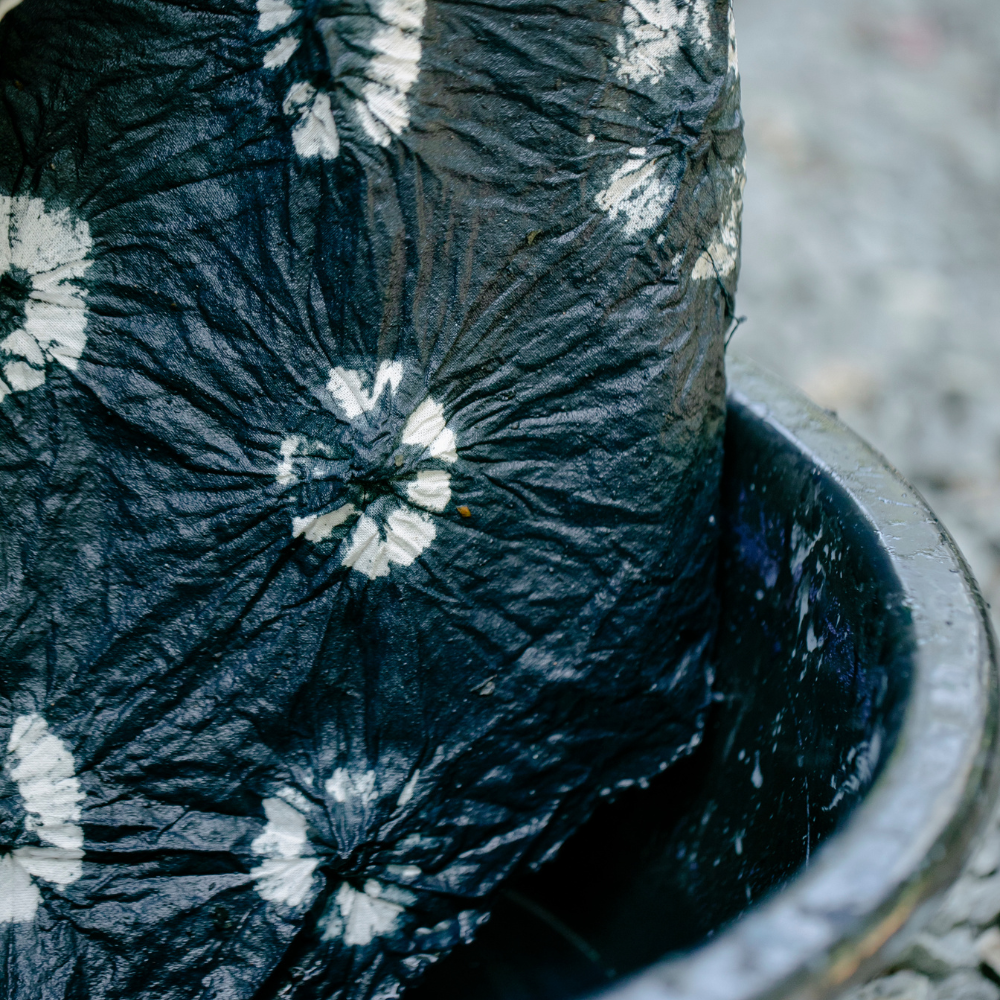
Dyeing Process
Now, onto the main event - the process of dyeing your cotton fabric.
It's like a chemistry experiment, but way more fun!
Cotton is a very absorbent material.
Dyeing cotton isn't just an art; it's a science.
It is essential to prewash the cotton fabric to remove dirt, oils, and impurities and allow the dye to seep into the fibers evenly; pre-treatment of the material is also essential to improve the dye's adherence to the fabric.
You can use regular detergent and avoid any fabric softeners or ironing throughout this process.
Once the fabric is washed, prepare the dye solution, following the manufacturer's instructions; start by dissolving your chosen dye in hot water, adding salt or soda ash if recommended by the manufacturer.
Use gloves and mix the dye with the water solution, and then immerse your fabric in the dye bath, giving it a good stir to ensure even color distribution.
Be sure to stir and maintain constant temperatures throughout the process, which can take anything from 10 minutes to one hour--let it soak up all that color!
Always remember to follow safety precautions when handling different types of dyes.
Now for the fun part - playing with colors and patterns!
For a subtle gradient effect, try the ombré technique.
If you're feeling a bit more adventurous, tie-dye or shibori techniques can create stunning, intricate designs.
Remember, the key to achieving the perfect shade or effect is experimentation and practice.
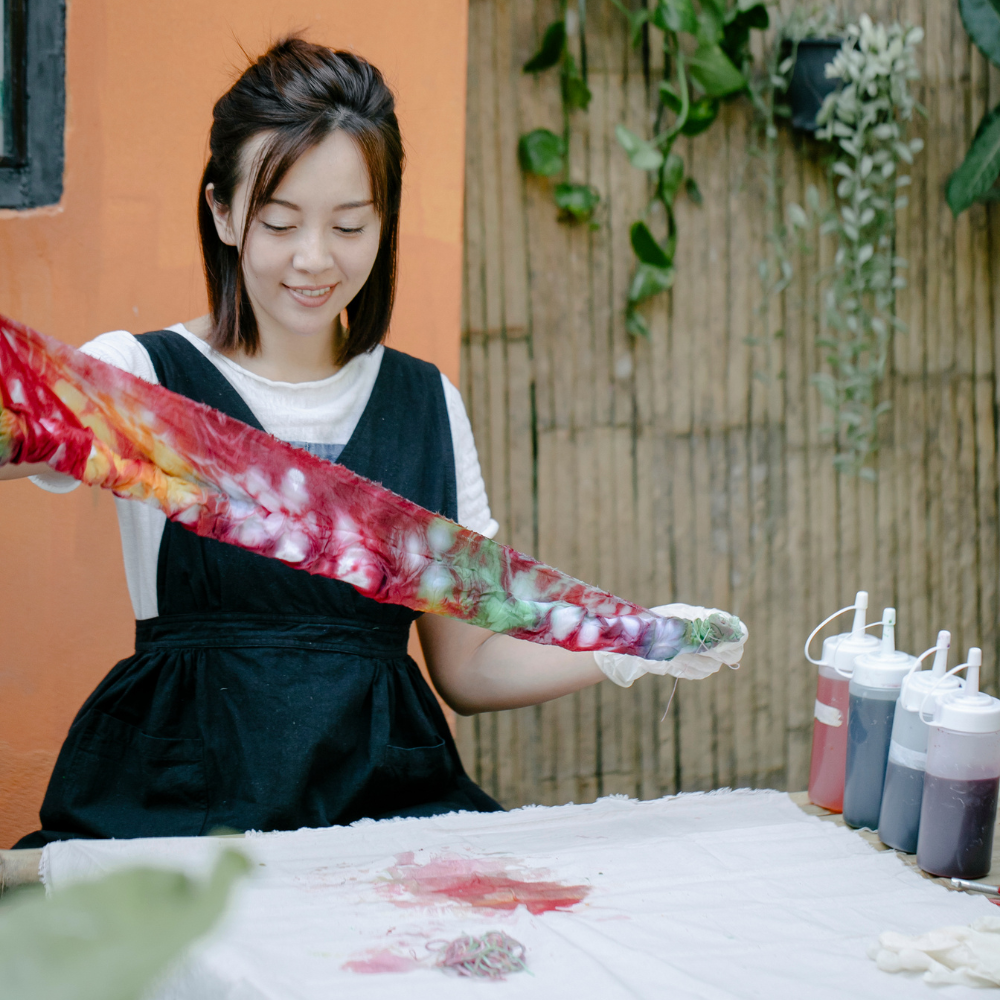
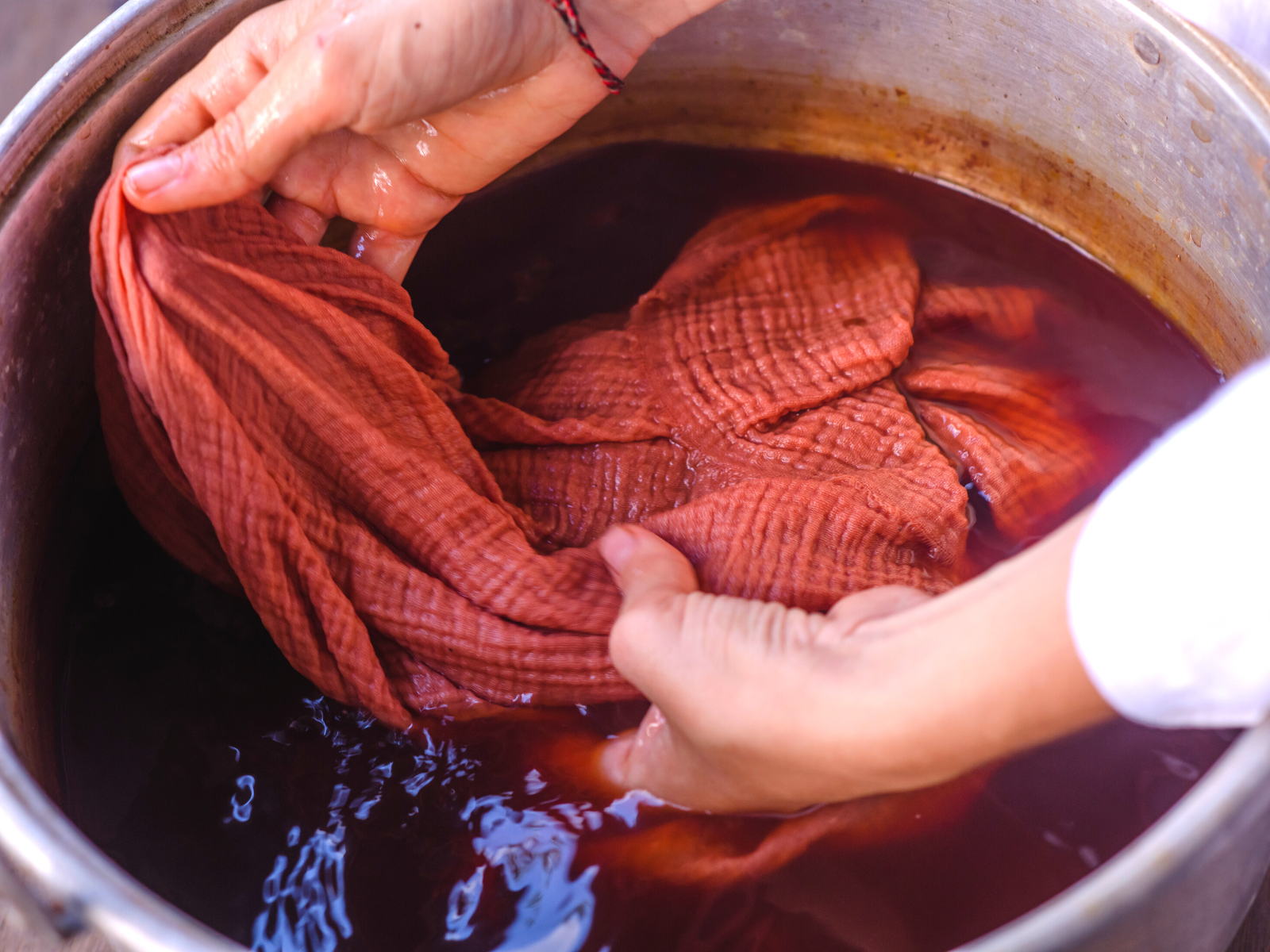
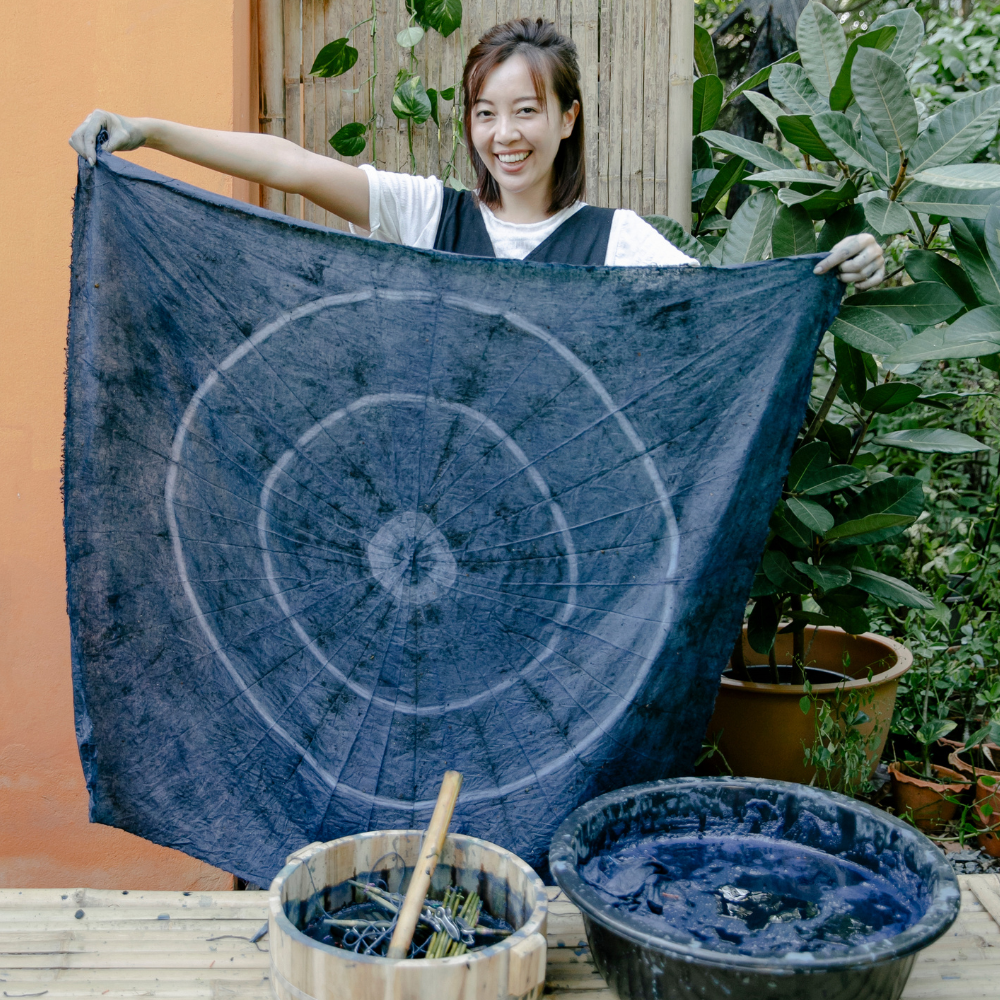
Dyeing Methods and Tools
Before diving into the dyeing process, gather all necessary materials and tools.
First and foremost, your cotton fabric - the blank canvas waiting for your artistic touch.
You'll also need your chosen dye, a large pot or container, rubber gloves, and some salt or soda ash to help the dye adhere better to the fabric.
Since dyeing can be a messy art form, protect your workspace and wear old clothes.
You will need stirring utensils, a thermometer for temperature control, and a place to hang the fabric once it's done.
You could also use some binders like rubber bands or string to create patterns on your fabric; for example, if you plan to tie-dye your cotton fabric, have plenty of rubber bands and string ready to go!
If you plan to do tie-dye or shibori, you will need rubber bands or clamps to create various patterns.
If you want to apply the dye evenly, try using squeeze bottles, brushes, or sponges.
Don't forget plastic wrap to cover and set any patterns and a fabric dye fixative to help prevent fading.
The method you choose for dyeing your cotton will depend on the type of dye and the desired effect.
Hand-dyeing techniques allow for more control and creativity, ideal for achieving unique patterns like tie-dye or shibori.
Dyeing machines, on the other hand, can offer consistent color coverage and are suitable for larger quantities of fabric.
Once you've chosen your preferred method, follow the manufacturer's instructions and practice dyeing on swatches of fabric before diving in head-first.
Making mistakes is part of the learning process, so don't be afraid to experiment and explore different techniques.
It all comes down to patience and practice, but with some trial and error come amazing results.
When the desired shade is reached, rinse the fabric in warm water to remove excess dye, lather up with detergent and cold or lukewarm water, and then hang it out to dry.
Once your masterpiece has dried, give it a good ironing to set the dyes into place--and voilà!
You now have a beautiful, colorful piece of artwork created with fabric dyes for cotton.
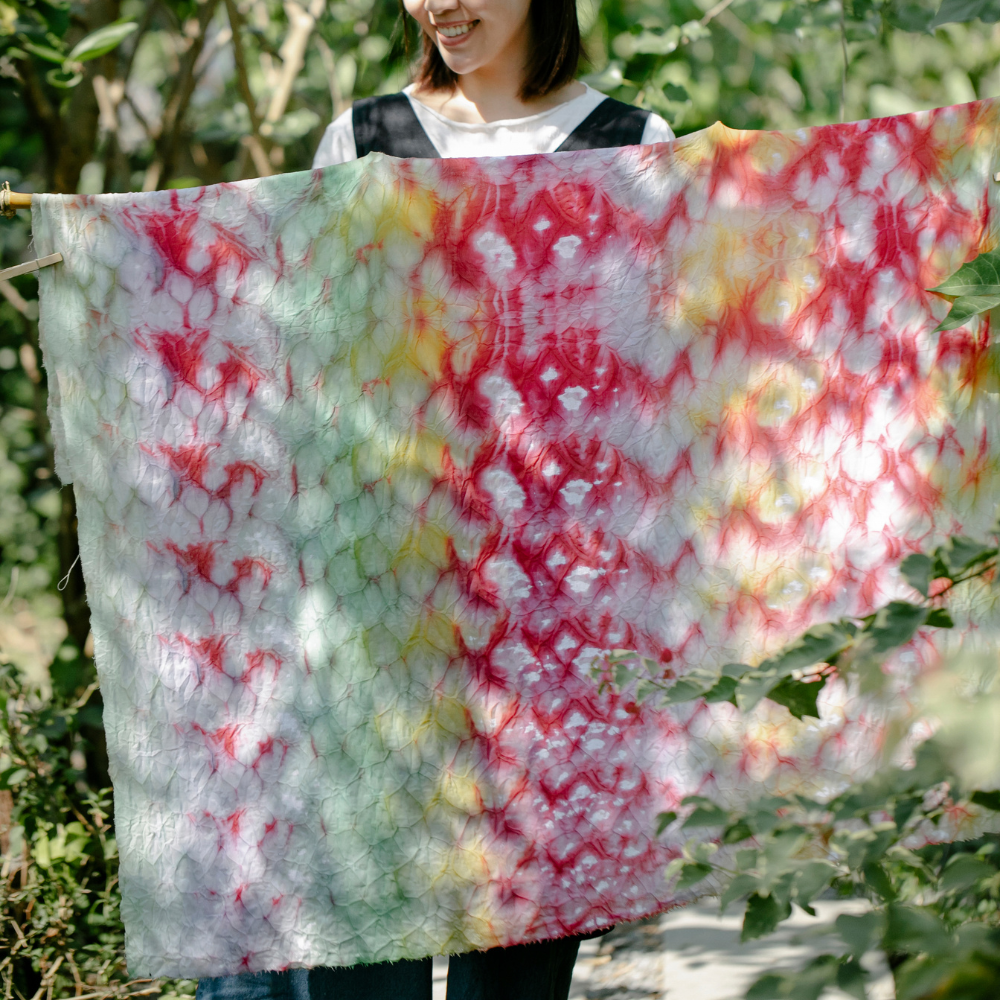

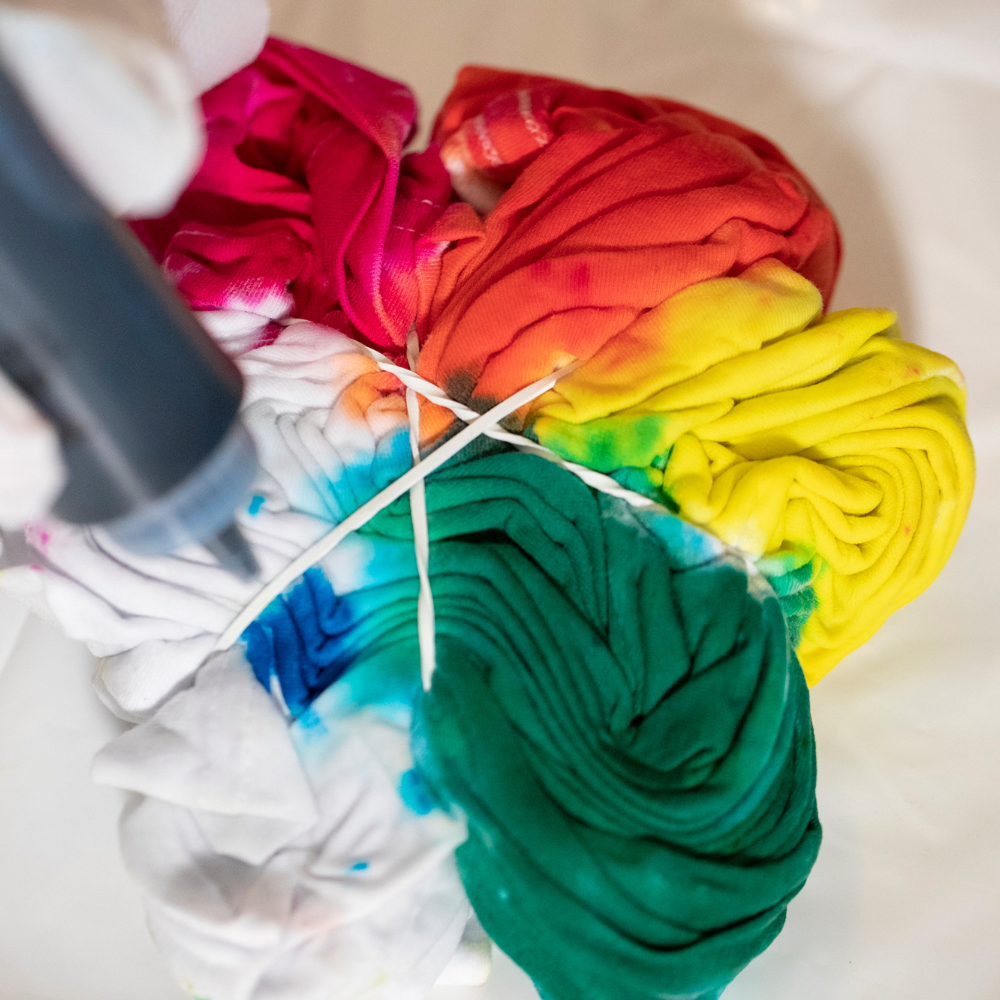
Tips and Tricks
Now that you have learned about the various types of dyes, the dyeing process, materials and tools, and history and techniques, you may find these tips and tricks helpful for an even better dyeing experience:
- Clean and prepare your workspace, fabrics, and tools before starting the dyeing process.
- Use a specific weight of fabric to dye for accurate measurements.
- Be patient and keep a constant temperature throughout the dyeing process.
- Experiment with color and mix different dyes to create unique hues.
- Rinse your dyed fabric in cold water to remove excess dye, then wash it separately to avoid any color bleeding; you can soak it in a solution of water and vinegar to help set the color.
- Remember, practice makes progress, so don't be discouraged if your first attempt doesn't turn out exactly as you imagined; keep trying, keep experimenting, and most importantly, keep having fun!
- Take photos of your creations, and share them on social media and with friends.


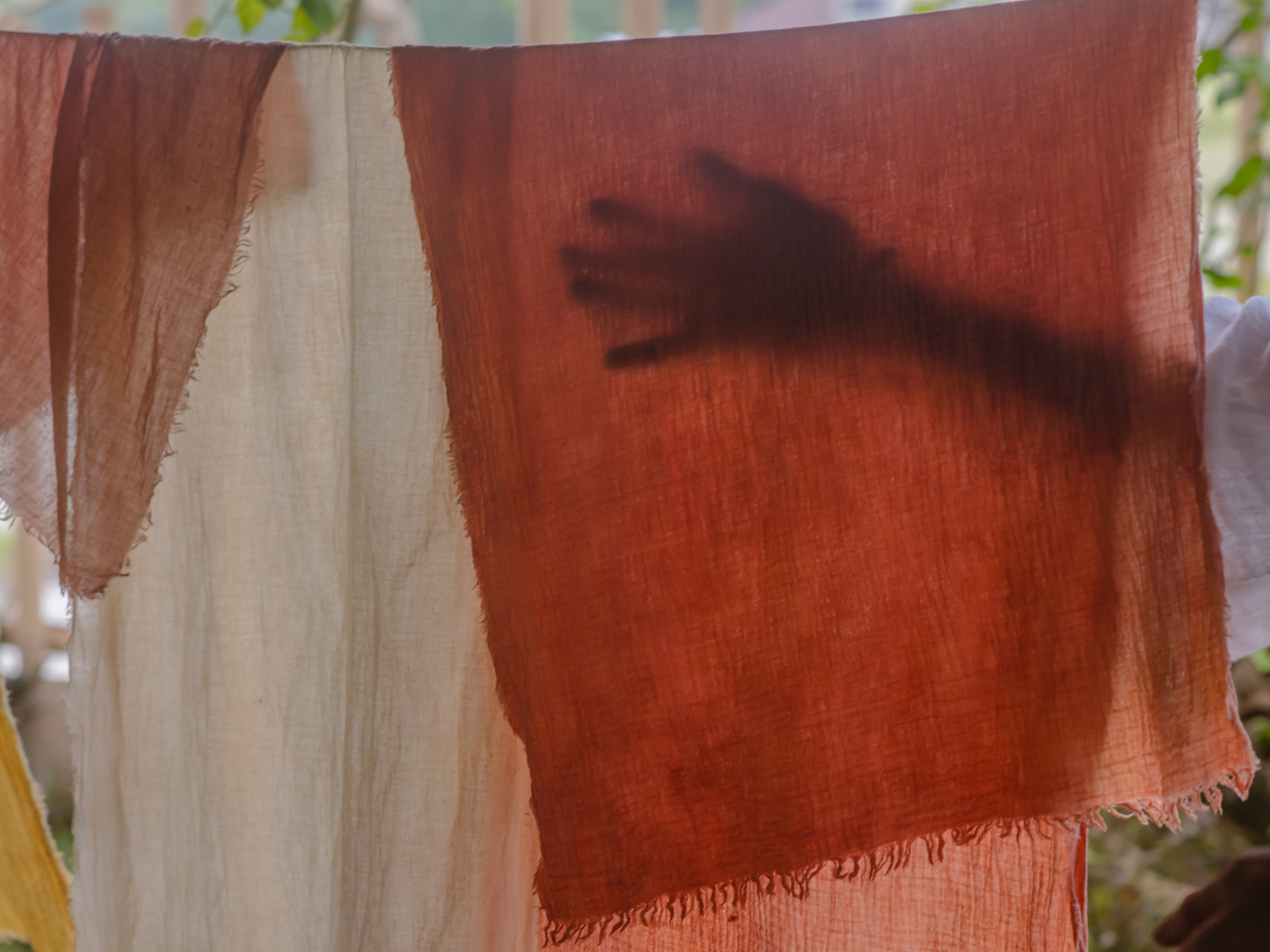
Creating Colorful Cotton Fabrics
Fabric dyes for cotton are a wonderful way to express yourself through art.
Colorful, unique, and full of possibilities, fabric dyeing can be an incredibly satisfying and fun art form.
The process is simple yet so rewarding, and it’s sure to put a smile on your face.
Armed with the right dye and tools, you can create stunning pieces of art that will last for years to come.
Whether you prefer natural or synthetic dyes, dip-dyeing or shibori, the options are endless.
With practice, you can perfect your techniques, experiment with color, and create beautiful works of art.
Remember to follow the manufacturer's instructions, take precautions, and have patience throughout the dyeing process.
We hope this guide has inspired you to tap into your creativity, experiment with fabric dyes for cotton, and add your personal touch to everything you do.
Remember, the magic lies in the journey, not just the destination.
So, don't worry if your first attempt isn't perfect - each step is a learning experience, bringing you one step closer to mastering the art of fabric dyeing.
Now it's your turn to roll up your sleeves, let your creative side loose, and add some color to your life; we can't wait to see what you create!
Go ahead, grab that cotton fabric, pick your favorite dye, and let the color extravaganza begin!
Happy dyeing!


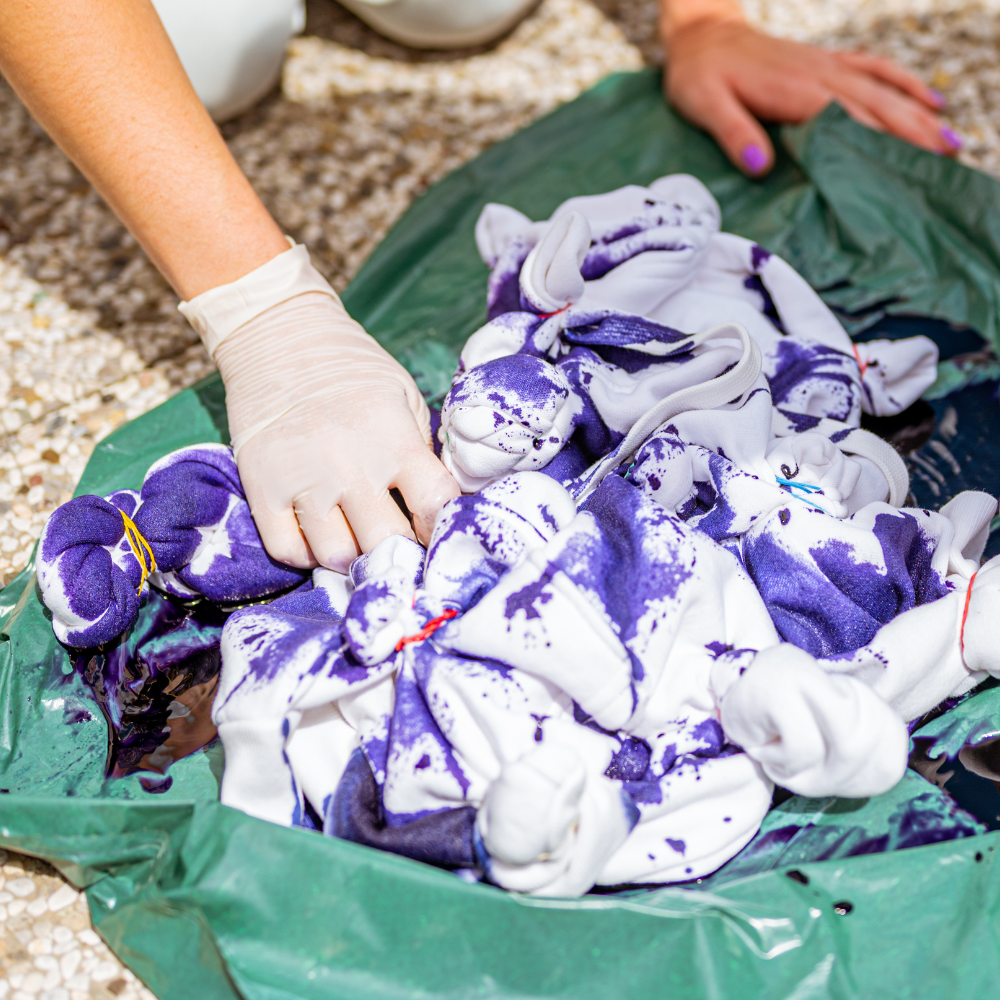
Eager to learn more about dyeing cotton fabrics? Check out CraftSanity's video!
Want even more content about creativity and art?
Be sure to check out all of our creative chronicles!
Interested in crafting with fabrics?
Check out some of our other textile articles:
